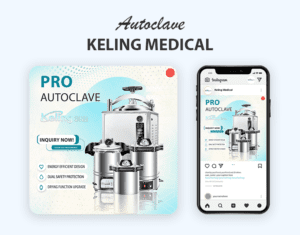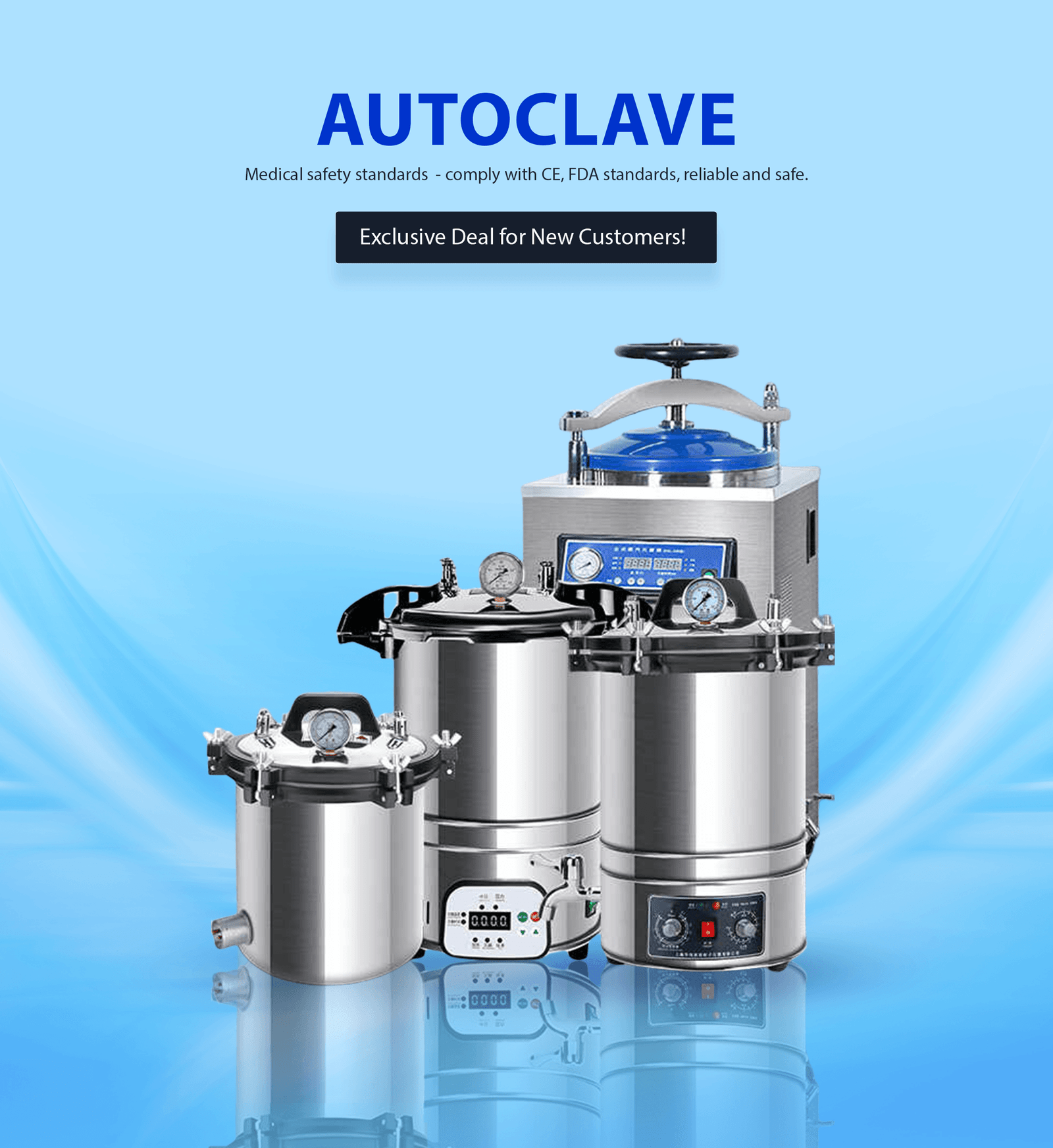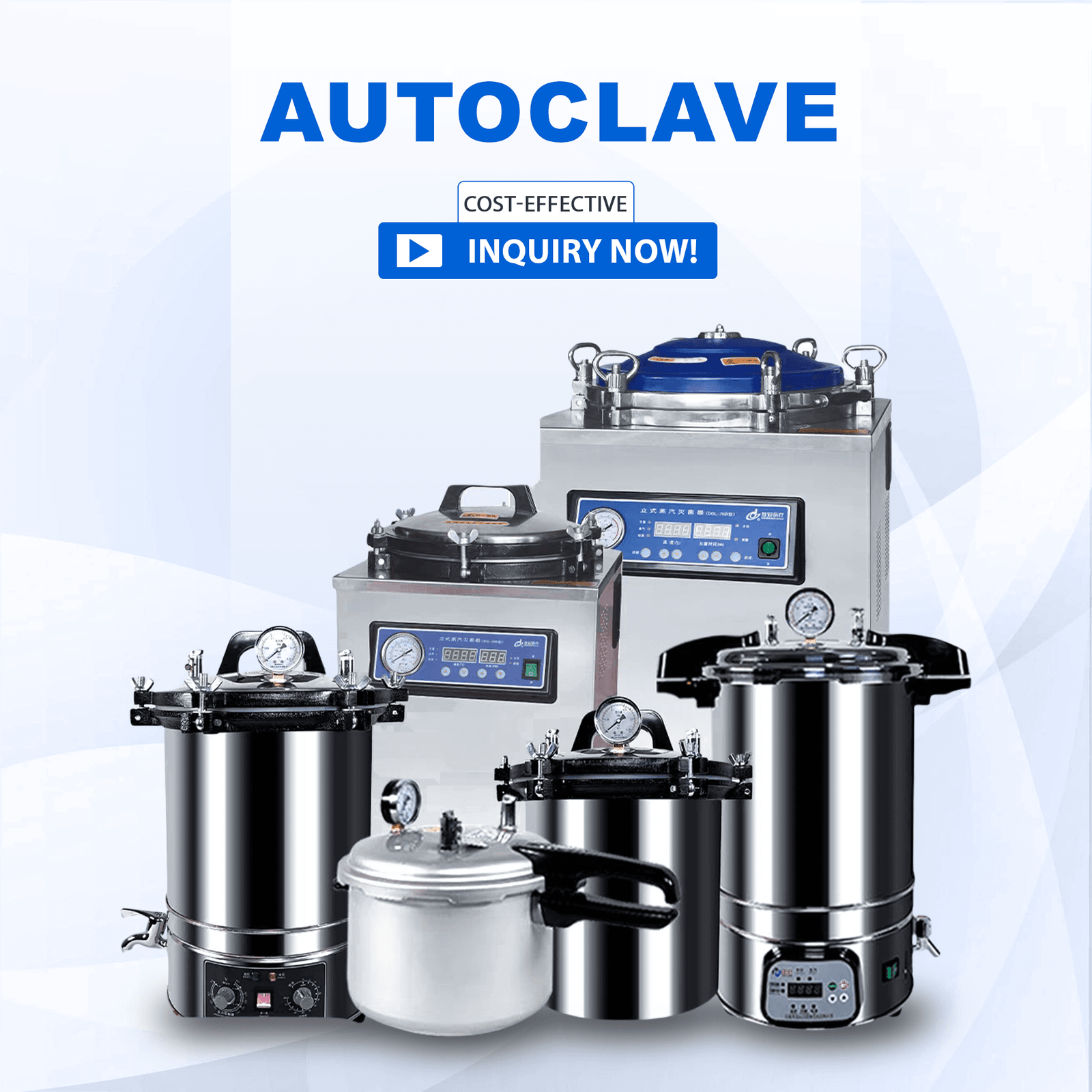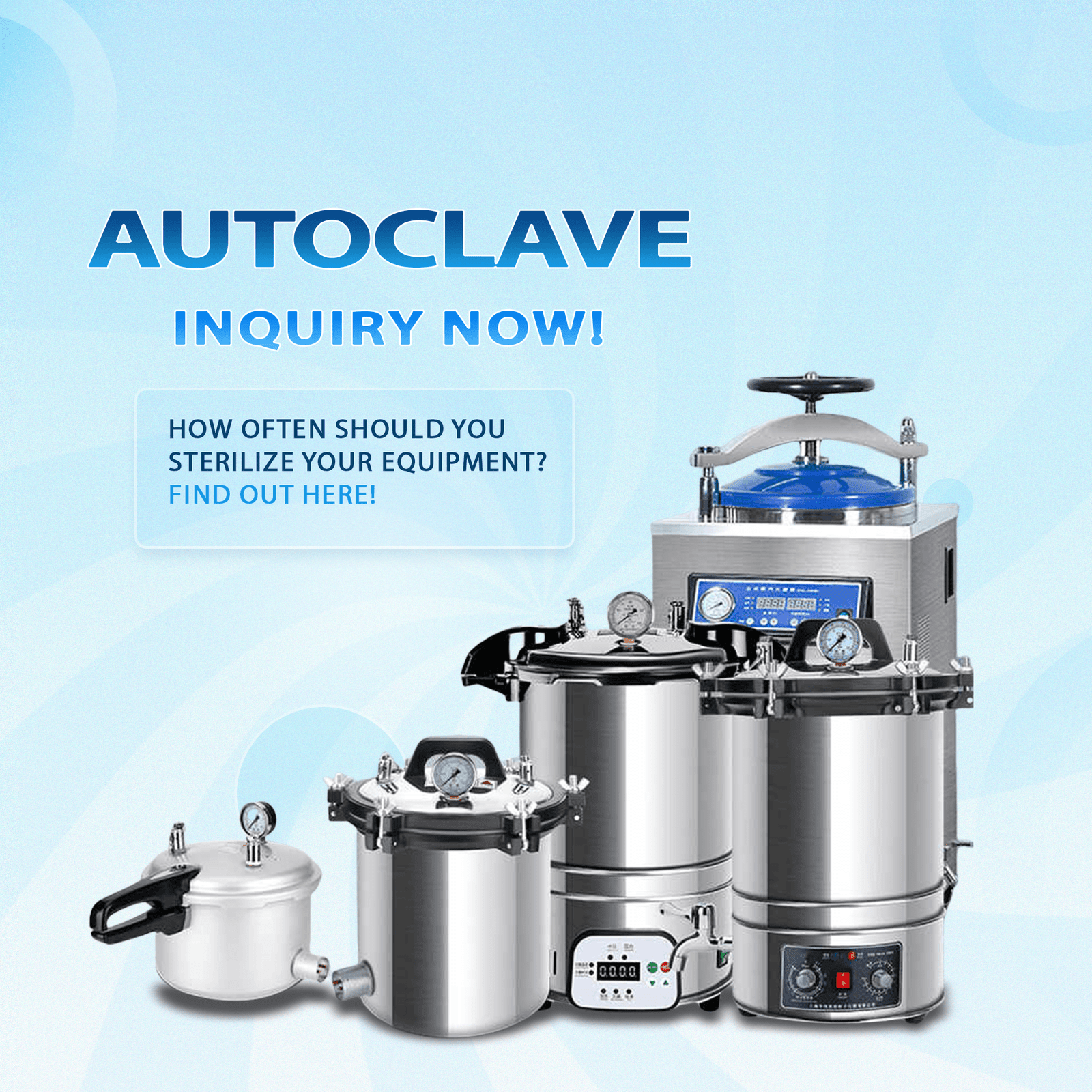
Saturated Steam Fundamentals:
Phase Diagram: [ P_{\text{sat}} = 10^{(A – \frac{B}{T + C})} ] The Antoine equation for water uses constants (A=8.07131), (B=1730.63), and (C=233.426) to calculate saturation pressure.
Critical Ratios:
| Teplota | Absolute Pressure | Steam Quality Requirement |
|---|---|---|
| 121°C | 2.1 bar (30.5 psi) | ≥97% dry saturated steam |
| 134°C | 3.0 bar (43.5 psi) | ≥99% dry saturated steam |
Interdependency Effects:
1 psi pressure drop → 1.3°C temperature decrease
Air entrapment at 5% level requires 30% more exposure time.
Standard Cycles:
| Typ cyklu | Temp (°C) | Pressure (psi) | Time (min) | Aplikace |
|---|---|---|---|---|
| Gravitační posun | 121 | 15-17 | 30 | Skleněné výrobky, textil |
| Před vysáváním | 134 | 29-32 | 4 | Lumened instruments |
| Liquids (Slow Exhaust) | 121 | 15-17 | 45 | Kultivační média |
| Flash | 134 | 29-32 | 3 | Nouzové nástroje |
Material-Specific Limits:
| Materiál | Maximální teplota | Max Pressure | Cycle Restrictions |
|---|---|---|---|
| Polycarbonate | 135°C | 25 psi | Avoid liquid cycles |
| PTFE | 260°C | 75 psi | All cycles permitted |
| Silicone Rubber | 150°C | 45 psi | Max 15 cycles/day |
Temperature Sensors:
| Typ | Accuracy | Response Time | Placement Strategy |
|---|---|---|---|
| Fiber Optic Probes | ±0.1°C | 0.5 sec | Direct contact with load |
| Wireless Loggers | ±0.3°C | 2 sec | Inside sterilization pouches |
| Infrared Sensors | ±0.5°C | 0.1 sec | Chamber wall-mounted array |
Regulace tlaku:
PID Controllers: Maintain ±0.2 psi accuracy
The triple safety valves operate at a setting of 110% above the normal operating pressure.
Leak Testing: ≤1 mbar/min (EN 285 standard)
Performance Qualification (PQ):
Heat Distribution Test:
30 thermocouples, 3 consecutive runs
Acceptance: All points ≥121°C ±1°C
Heat Penetration Test:
Simulated worst-case load (stainless steel tubes)
Fo = 15 minutes at 121°C equivalent
Biological Challenge:
Geobacillus stearothermophilus (1×10⁶ spor)
Incubation: 56°C for 7 days
Požadavky na dokumentaci:
Real-time data logging (temperature/pressure every 5 seconds)
Calibration certificates (NIST-traceable)
Annual requalification reports
Pressure-Temperature Mismatches:
| Symptom | Kořenová příčina | Corrective Action |
|---|---|---|
| High pressure, low temp | Air pockets in chamber | Extend pre-vacuum phase |
| Low pressure, high temp | Steam superheating | Install steam moisture separator |
| Rapid pressure swings | Faulty PRV | Replace pressure relief valve |
Případová studie: The biotechnology lab managed to reduce wet packs by 91%.
The biotech lab enhanced its drying phase by setting the pressure to -0.7 bar in a vacuum environment.
The tray load weight decreased from 8 kg to 5 kg.
Installing dual moisture sensors in exhaust line
An autoclave achieves its best performance when temperature-pressure parameters remain within ±1°C and ±2% of their predetermined setpoints. By using IoT technology for monitoring and predictive algorithms sterilization failures drop by 78% and energy consumption decreases by 25%. The upcoming ISO/AWI 54226 (2025) standard will require real-time parametric release which makes precise parameter control necessary.
Q1: How does pressure become important when temperature alone can achieve sterilization? A: A lack of adequate pressure at 121°C leads to superheated steam which cannot penetrate microorganisms effectively.
Q2: To determine sterilization time across various pressures you need to apply the (F_0) formula. Use the (F_0) formula: [ F_0 = \Delta t \times 10^{(T – 121)/10} ] Example: The equivalent sterilization time for 10 minutes at 126°C computes to (10 \times 10^{(126-121)/10} = 31.6) minutes.
Q3: What pressure compensates for high altitude sterilization? At 2,000m elevation: [ P{\text{adj}} = P{\text{sea}} \times \left(1 + \frac{\text{Elevation (m)}}{6,500}\right) ] For 121°C: 15 psi → 17.3 psi
Q4: Is it possible to achieve sterilization by autoclaving at reduced temperatures for extended durations? Yes, using the formula: [ t_2 = t_1 \times 10^{(T_1 – T_2)/Z} ] For Z=10°C: 121°C/15min ≈ 134°C/2min
Q5: How often should pressure gauges be calibrated? Per ISO 17665:
Monthly checks with deadweight tester
Full recalibration every 6 months

Within healthcare delivery systems maintaining sterile medical equipment is an essential priority that cannot be overlooked. Medical equipment dealers, distributors, and procurement specialists must grasp the complexities of sterilization technology

Medical instrument cleanliness and safety remain top priorities in modern healthcare advancements. Medical equipment dealers and distributors as well as procurement specialists must grasp sterilization technology to effectively serve hospitals

Sterilizace je základním prvkem postupů kontroly infekcí ve zdravotnických zařízeních i v laboratořích. Sterilizace v autoklávu pomocí páry je účinná pro mnoho aplikací, ale ukazuje se jako neoptimální v případě

Zdravotníci po celém světě důvěřují autoklávům jako základním nástrojům pro zajištění bezpečnosti a sterility lékařských nástrojů. Distributoři zdravotnických prostředků a specialisté na nákupy musí rozumět principům a výhodám autoklávů.

Díky pokroku ve zdravotnictví je nezbytné, aby lékařské nástroje byly vždy bezpečné a sterilní. Distributoři, prodejci a nákupčí zdravotnických prostředků musí rozumět metodám sterilizace, aby mohli efektivně pracovat. Na stránkách

Sterilizace lékařských přístrojů a nástrojů vyžaduje autoklávy, protože chrání bezpečnost pacientů a usnadňují dodržování regulačních norem. Nejdokonalejší autoklávové systémy však stále narážejí na určitá omezení. Distributoři zdravotnických prostředků,